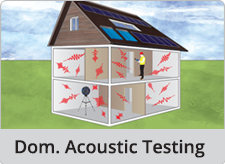Offices Nationwide

Sound Absorption
The loss of sound energy when sound waves come into contact with an absorbent material such as ceilings, walls, floors and other objects...more

Air Testing & Leakage
Air Pressure Testing is not just for new-builds, it can be used to find leakage areas in existing buildings, improve the air tightness and improve/stop drafts..more
Wiltshire - TER DER Calc - 0239 366 0106
The office that covers this area is: Portsmouth
The towns & cities that are covered within this county are:
Aldbourne, Alderbury, Allington, Amesbury, Ansty, Axford, Barbury Castle, Beckhampton, Biddestone, Bishopstone, Bradford on Avon, Braydon, Bromham, Broughton Gifford, Burton, Calne, Castle Combe, Cherhill, Chippenham, Chiseldon, Coate, Collingbourne Kingston, Corsham, Cranborne Chase, Devizes, Downton, Eastcott, Enford, Fifield, Foxham, Grafton, Ham, Haxton, Highworth, Lacock, Liddington, Littlecott, Longstreet, Malmesbury, Manton, Melksham, Mere, Monkton Farleigh, Patney, Pewsey, Purton, Ramsbury Ridge, Salisbury, Sedgehill, Snap, Stonehenge, Tidcombe, Tockenham, Trowbridge, Warminster, Wedhampton, Westbury, Wilcot, Wilton, Woodborough, Wootton Bassett, Zeals,
Phone Number: 0239 366 0106 Email: wiltshire@e2consultants.co.uk
SAP Calculations is sometimes referred to as SAP Conversion rating, Part L1B Compliance, SAP Conversion Calculations, SAP Conversion Calcs, SAP Conversion Assessment, SAP Conversion Calc.
Why Do I Need A SAP Calculation?
If you are selling a home before it has been built, you will need to provide information about energy efficiency in a Predicted Energy Assessment (PEA).
Any conversions or new dwellings need to have a SAP Calculation and Predicted EPC before any work can begin as outlined in Part L of Building Regulations in Wiltshire in 2006.
When changes are made to the heating, hot water provision or air conditioning/ventilation services, it is the responsibility of the builder to provide any On Construction EPCs upon completiong of a new home or conversion into fewer or more units.
What Is A SAP Calculation?
The higher the SAP rating, the lower the cost will be to run the building. The score represents the cost of energy required by a property over the course of a year with a 100 score meaning there's no energy cost. To calculate the SAP, the assessor uses information relating to lighting, heating, hot water systems, renewable technolgies used and the elements of structure.
A SAP calculation, the Government's Standard Assessment Procedure for Energy Ratings, is required to produce an On Construction EPC (Energy Performance Certificate) or a Predicted Energy Assessment (PEA).
How Is A SAP Assessment Undertaken?
The crucial information needed for the SAP software relates to the type of dwelling, floors, walls, the roof, windows, doors, lighting, renewable technologies, 'U' values, hot water and ventilation. With this, we can determine if a building complies with Building Regulations in Wiltshire.
Amongst other things, the SAP assessor will determine how good the thermal elements are in the floors and walls as well as how well heat passes through these elements - this is known as a 'U' value. A high 'U' value represents a high amount of heat lost - this is used in the SAP calculation which is done off-site but requires plans and drawings of the site in order to be calculated.
Our other services include:
TER DER Calc can also be known as:
SAP Calculations, Domestic Carbon Emission Calc, Standard Assessment Procedure, SAP Rating, TER DER Calculation, SAP Assessment, Domestic Carbon Emission Calculation, SAP Calc,


Copyright 2025 E2 Specialist Consultants Limited
Company No. 06728970













































